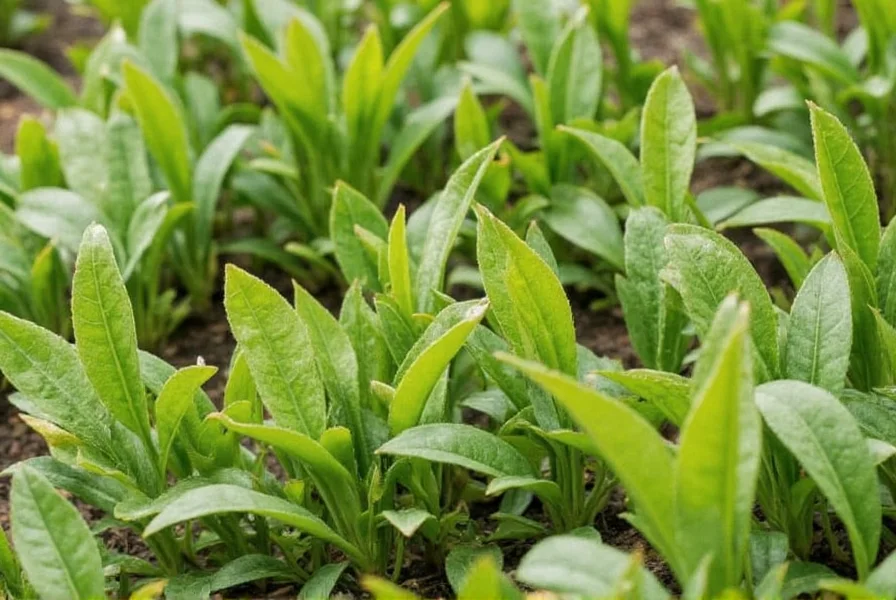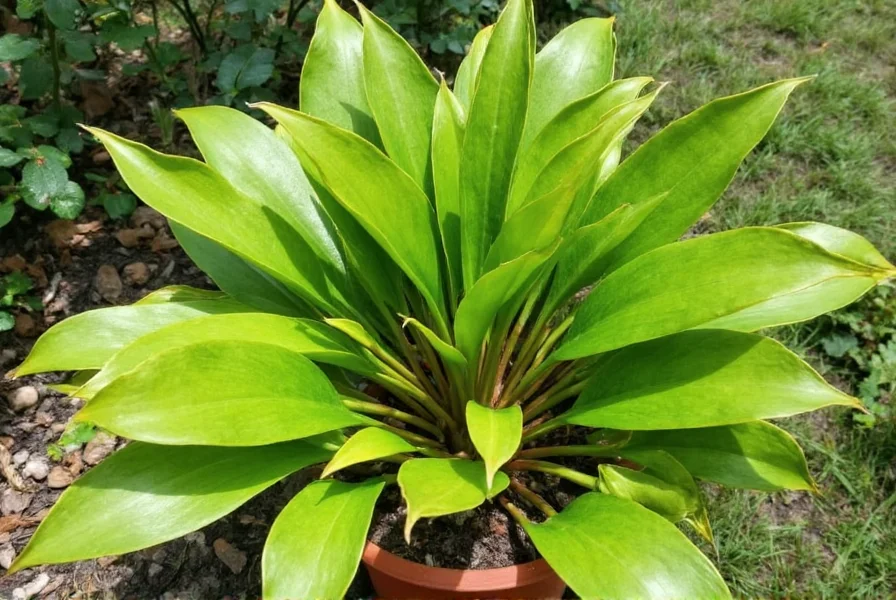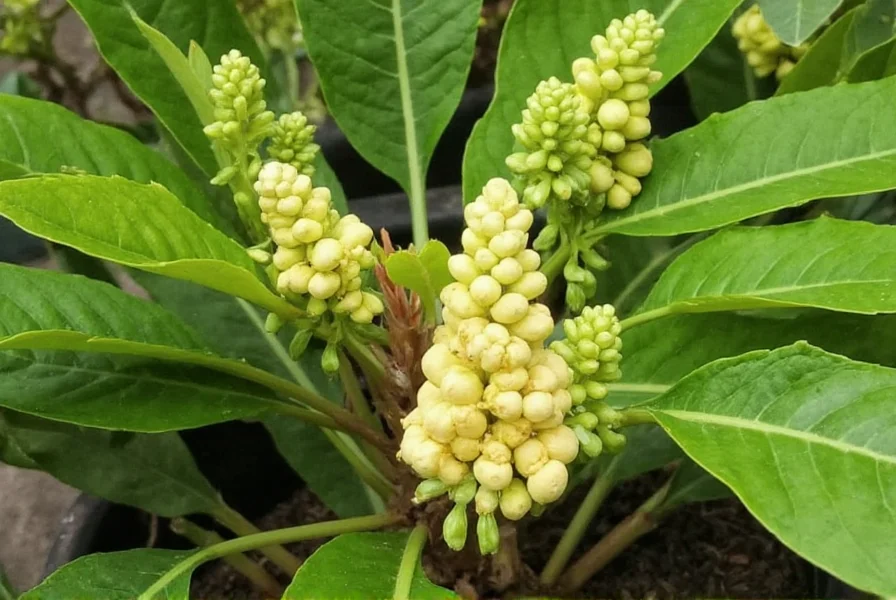When searching for ginger plants for sale, understanding your options ensures you select quality specimens for successful cultivation. Whether you're a home gardener seeking edible ginger or a landscaper wanting ornamental varieties, knowing what to look for makes all the difference.
Types of Ginger Plants Available for Purchase
Ginger enthusiasts can choose from several distinct varieties, each serving different purposes. Culinary ginger remains the most popular choice for home growers, while ornamental species offer tropical beauty.
| Variety | Primary Use | Availability | Special Requirements |
|---|---|---|---|
| Common Ginger (Zingiber officinale) | Culinary | Widely available | Warm temperatures, partial shade |
| Shell Ginger (Alpinia zerumbet) | Ornamental | Specialty nurseries | Full to partial shade, high humidity |
| Butterfly Ginger (Hedychium) | Ornamental | Seasonal availability | Moist soil, sheltered location |
| Galangal (Alpinia galanga) | Culinary (Asian dishes) | Limited availability | Warmer climate, well-draining soil |
Where to Find Quality Ginger Plants
Locating reputable sources for ginger plants for sale requires knowing where to look. Specialty nurseries focusing on tropical plants typically offer the widest selection of healthy specimens. Online plant retailers have expanded access to rare varieties, though shipping considerations become important.
Local garden centers often carry common ginger varieties during spring planting season, allowing you to inspect plants before purchase. Farmers markets sometimes feature growers selling fresh ginger rhizomes specifically prepared for planting. University extension programs occasionally offer plant sales featuring regionally appropriate varieties.
When searching for where to buy ginger plants online, verify the seller's reputation through independent reviews. Look for businesses that specialize in edible or tropical plants rather than general merchandise retailers. Reputable sellers provide detailed information about plant variety, growing requirements, and shipping conditions.
What to Look for When Purchasing Ginger Plants
Selecting healthy ginger plants requires careful inspection. For rhizome purchases, choose firm specimens with multiple growth buds (eyes) and no signs of mold or shriveling. Avoid any ginger plants for sale with soft spots or unusual discoloration.
Live potted plants should show new growth and vibrant green leaves without yellowing or spotting. Check the soil moisture level—properly cared for plants maintain consistent moisture without being waterlogged. Ask about the plant's growing conditions at the nursery to ensure a smoother transition to your environment.
Consider the plant's maturity stage when making your selection. Younger plants typically adapt better to new environments, while more mature specimens may offer quicker harvests but require more careful handling during transplanting.
Understanding Price Ranges and Value
Pricing for ginger plants varies significantly based on variety, size, and source. Common culinary ginger rhizomes typically cost $3-$8 per piece, while established potted plants range from $15-$40 depending on maturity. Rare ornamental varieties can exceed $50.
When evaluating organic ginger plants for sale, expect a 20-30% premium over conventionally grown options. This reflects the certification costs and specialized growing practices required. Verify the organic certification through independent sources rather than taking seller claims at face value.
Consider the long-term value when purchasing. A slightly more expensive plant with visible growth buds and healthy roots often provides better returns than bargain options that may struggle to establish. Factor in shipping costs when comparing online options for where to buy ginger plants online.
Shipping and Delivery Considerations
When ordering ginger plants for sale online, understand the shipping process thoroughly. Reputable sellers ship during appropriate seasons and use insulated packaging with moisture control. Most use expedited shipping to minimize transit time, especially for live plants.
Check the seller's guarantee policy regarding damaged or non-viable plants. Quality sellers offer replacements or refunds for plants that don't survive shipping. Inquire about their experience shipping to your climate zone—some sellers avoid shipping during extreme temperature periods.
Upon delivery, inspect plants immediately. Healthy ginger rhizomes feel firm and show no signs of mold. Potted plants should have moist (not soggy) soil and show no evidence of pests. Document any issues immediately if you need to file a claim.
Care Instructions After Purchase
Proper care immediately after purchase significantly impacts your ginger plant's success. For rhizomes, plant within 1-2 days of receipt in well-draining soil with the growth buds facing upward. Water thoroughly after planting, then maintain consistent moisture without saturation.
Potted plants need gradual acclimation to your growing conditions. Keep newly purchased ginger plants in indirect light for the first week, then slowly introduce them to their permanent location. Maintain temperatures between 70-85°F (21-29°C) for optimal growth.
Fertilize ginger plants for sale purchases with balanced organic fertilizer after new growth appears. Avoid over-fertilizing, which can damage delicate root systems. Most ginger varieties benefit from high humidity—consider using a pebble tray or humidifier in dry environments.
Common Mistakes to Avoid When Buying Ginger Plants
Many beginners make preventable errors when selecting ginger plants for sale. Purchasing grocery store ginger for planting often fails because commercial ginger receives growth inhibitors. Always seek plants specifically prepared for cultivation.
Ignoring your climate zone when selecting varieties leads to disappointment. Some ginger types require tropical conditions while others tolerate subtropical climates. Research which varieties thrive in your specific growing zone before purchasing.
Overlooking soil requirements proves costly—ginger needs well-draining, nutrient-rich soil. Avoid planting directly in heavy clay soils without proper amendment. Similarly, many buyers underestimate the space requirements for mature ginger plants, leading to overcrowding issues later.

Seasonal Availability Considerations
Ginger plant availability follows distinct seasonal patterns. Most nurseries and online retailers stock ginger plants from March through June, aligning with optimal planting seasons in temperate climates. Some specialty growers offer limited winter availability for tropical regions.
When searching for ginger plants for sale during off-seasons, expect higher prices and potentially lower quality. Reputable sellers won't ship live plants during extreme weather conditions that could damage the specimens in transit. Consider starting with rhizomes rather than live plants if purchasing outside prime growing seasons.
Understanding these seasonal patterns helps you plan purchases effectively. Many successful growers order early in the season to secure the best specimens before peak demand drives up prices and reduces selection.

Frequently Asked Questions
Can I grow ginger from grocery store ginger root?
While possible, grocery store ginger often receives growth inhibitors that reduce sprouting success. For reliable results, purchase ginger plants for sale specifically prepared for cultivation from reputable growers who avoid these treatments.
How long does it take for purchased ginger plants to produce harvestable roots?
Most ginger varieties require 8-10 months of growth before producing harvestable rhizomes. When purchasing established plants rather than starting from rhizomes, you might reduce this timeframe by 2-3 months depending on the plant's maturity at purchase.
What's the difference between ginger plants for culinary use versus ornamental varieties?
Culinary ginger (Zingiber officinale) produces the familiar edible rhizomes, while ornamental varieties like shell ginger or butterfly ginger feature showy flowers but less flavorful roots. Some ornamental types have mildly toxic components, making them unsuitable for consumption despite their ginger-like appearance.
How do I verify if an online seller of ginger plants is reputable?
Check for independent customer reviews on third-party platforms, verify business credentials, and look for detailed growing information on their website. Reputable sellers of ginger plants for sale provide clear shipping policies, guarantees, and responsive customer service. Avoid sellers with only stock photos and no specific plant information.











 浙公网安备
33010002000092号
浙公网安备
33010002000092号 浙B2-20120091-4
浙B2-20120091-4